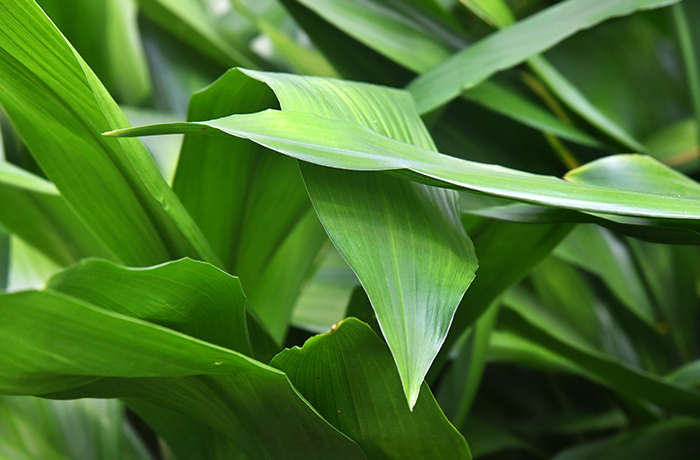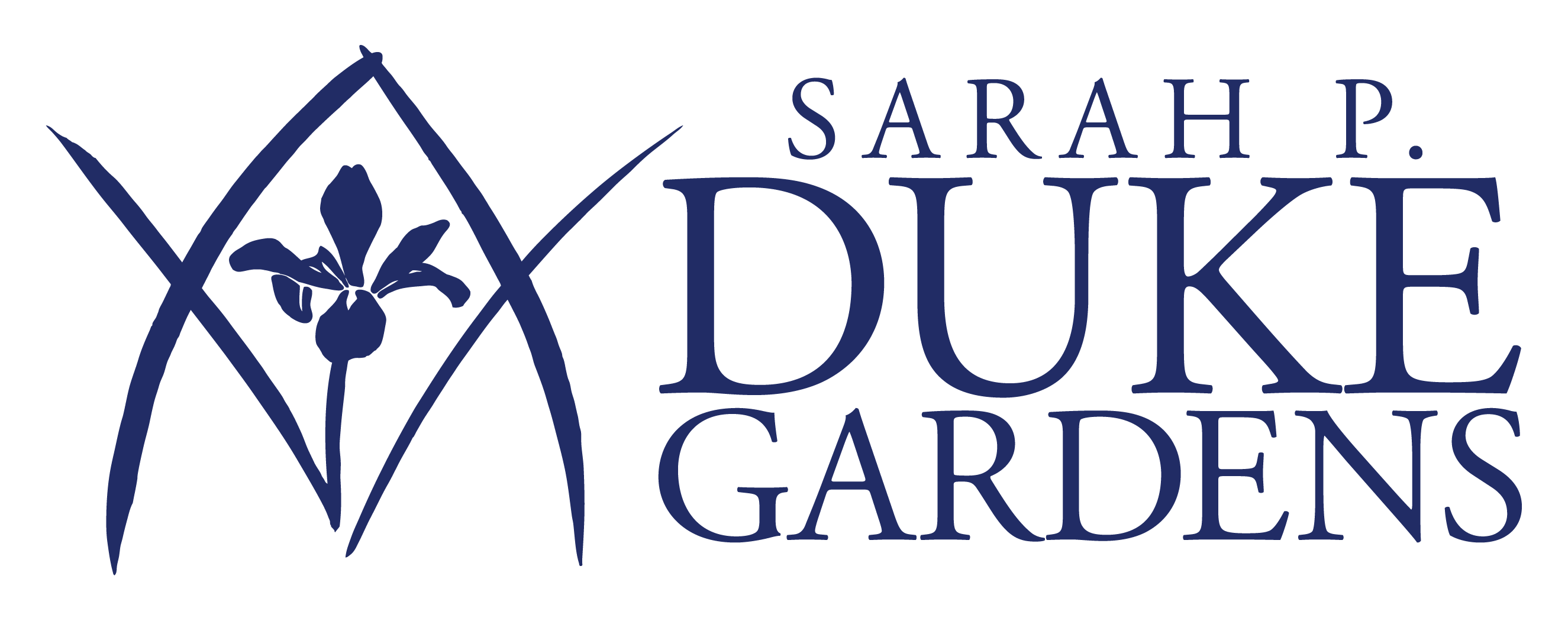
Close-up of cast iron plant leaves, by William Hanley.
Botanical name: Aspidistra elatior
Common name: Cast iron plant
Family name: Asparagaceae (Asparagus family)
Native range: Southern Japan
Location in Duke Gardens: Historic Gardens, Culberson Asiatic Arboretum, Doris Duke Center Gardens
USDA Hardiness Zones: 7-11
Most commonly grown indoor plants aren’t hardy enough to survive outdoors in the winter, but the cast iron plant (Aspidistra elatior) is a rare exception with roots in both worlds. This species is named for its iron constitution and its ability to thrive in extraordinarily inhospitable conditions, including low light, poor soils, lack of watering and general neglect. Here in the Southeastern United States, it is a hardy evergreen perennial that brightens the winter landscape, especially beneath the understory of pines and other trees where little else will grow. In fact, the only things that can reliably kill them are full sun and consistently soggy soil.
From a botanical perspective, cast iron plant is unusual in that its “stems” are actually part of its leaves that emerge from an underground stem called a rhizome. The same is true for the flowers, which are small and fleshy and rarely seen because the plants need more light in early summer than conditions generally permit. As you might expect from their maroon coloring, they are pollinated not by the more typical bees or hummingbirds, but by fungus gnats, tiny flies whose larvae live in the soil and feed on fungi. The gnats mistake the squat flowers for fungi, inadvertently spreading pollen as they travel from plant to plant. However, the plants primarily spread asexually if given room to grow, forming dense and expanding colonies over time.
Taxonomically, cast iron plant was originally placed in the lily family, which was later broken up into many smaller families. It is now a member of the asparagus family, along with relatives like lily of the valley (Convallaria majalis), Japanese rohdea (Rohdea japonica) and other common house plants like snake plant and dracaena (Dracaena spp.).
Although native to southern Japan, the cast iron plant was ubiquitous in late 19th- and early 20th-century Britain, where it was a status symbol of middle-class respectability. As a result, it frequently appeared in the art and literature of the times, most notably in George Orwell’s early novel “Keep the Aspidistra Flying” and horror writer William Fryer Harvey’s short story “The Man Who Hated Aspidistras.” There was even a comic song by Gracie Fields showcasing “The Biggest Aspidistra in the World.” Since then, the aspidistra has fallen into cultural obscurity, although it is well loved both by Southern gardeners in search of a reliable hosta substitute and gardening novices grateful for an all-but-unkillable houseplant.
Because cast iron plant is so attractive and versatile, it can be found throughout Duke Gardens, including the Memorial Garden, the Welch Woodland Garden and the Culberson Asiatic Arboretum.
